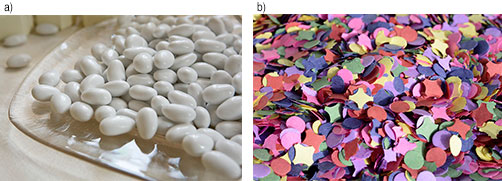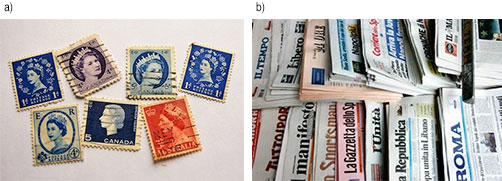30 Mar

Ciao, today we will talk about false friends!
Do you know what they are? As you may guess, we are not talking about people. False friends are words which are similar or identical in two different languages in the way they are written or pronounced, but that convey different meanings.
There are languages that are more similar to each other and they usually have more false friends, e.g. Spanish and Italian. You might get confused using some Italian words, ending up in awkward situations, sometimes even funny or embarrassing.
Ready? Let’s start.
EXERCISE 1
Match the name to the correct picture (some of them are false friends and some are not, of course).
1. Confetti:
2. Libreria:
3. Pigiama:
4. Camera:
5. Pirata:
6. Scale:
7. Duomo:
8. Caverna:
9. Stampa:
EXERCISE 2
Find the correct definition of the words in bold.
1. Un’ape è:
a) L’animale considerato più simile all’uomo
b) un insetto giallo e nero a strisce che può pungere
c) un coltello che taglia molto bene
2. Se senti un rumore:
a) qualcuno ha suonato il campanello di casa
b) qualcuno ha raccontato un fatto su altre persone senza conoscere la verità
c) qualcuno ha prodotto un suono fastidioso
3. La fabbrica è:
a) un materiale usato per cucire vestiti o altri oggetti come borse
b) un tipo di formaggio prodotto in Piemonte
c) un luogo dove si producono materiali da vendere
4. I parenti sono:
a) il padre e la madre
b) il padre, la madre, le sorelle, i fratelli, gli zii, i nonni e i cugini
c) gli animali che teniamo in casa
Now read the answers to our exercises, where you can discover something new about Italian vocabulary.
EXERCISE 1
- a = confetti (in English sugared almonds)
b = coriandoli (in English confetti) - a = biblioteca (in English library)
b = libreria (in English bookshop) - a = sgabello (in English stool)
b = pigiama (in English pyjamas) - a = camera (in English room)
b = macchina fotografica (in English camera) - a = pirata (in English pirate)
b = tappeto (in English carpet) - a = bilancia (in English scale)
b = scale (in English staircase) - a = cupola (in English dome)
b = duomo (in English cathedral, the main church of a town) - a = quaderno (in English notebook)
b = caverna (in English cavern) - a = francobollo (in English stamp)
b = stampa (in English press)
EXERCISE 2
- b. Ape in Italian stands for scimmia.
- b. Rumor in Italian stands for pettegolezzo.
- c. Fabric in Italian stands for tessuto.
- b. Parents in Italian stands for genitori.
As you can see, sometimes the language we already speak can create some confusion. Here we have some tips not to make these kinds of mistakes:
– try to have a look at the context or the situation first, in order to figure out if a specific word means the same thing in the two languages: if someone mangia i confetti, those are not likely to be pieces of colourful paper you usually throw in the air at a party!
– always look up the meaning of a word in the dictionary when it is the first time you read or hear it, especially if the context or situation does not help to clear your doubts.
– Google can always be a precious tool: when it comes to objects, we can check the pictures on Google Images to compare if they refer to the same thing in the two languages.
